Be forewarned, this is something of a personal rant, but with the expanding organic, and sustainable food movement, coupled with the continuing loss of small scale workable land in this area, I do have to wonder just how many others are as frustrated as we are at the moment.
As writing tends to help me organize my thoughts, and knowing we’re not the only ones in this situation, I figured I’d make this particular rant public. Feel free to bypass this post, as it’s quite long, but if you’re curious about the source, and level of our frustrations, it might be good for a chuckle or two along the way. Besides, if we don’t laugh, we’ll probably cry. Otherwise, we’ll return you to our regularly scheduled programming with our next post, I promise.
Did We Miss The Boat?
We first moved to Santa Cruz county 20 years ago. Back then a large proportion of the county was rural, much of it was farm land, or well suited to being farm land, especially at the south end of the county, and relatively speaking, land was cheap then.
Hindsight being 20/20, we realize now that we should have secured a larger parcel of property then. The trouble with hindsight though, is it’s really only fodder for kicking yourself.
Then of course, as we’re all well aware, the resultant housing bubble changed the landscape, substantially, across much of California, and this area was no exception. Over the course of a decade, some of California’s best, and most productive, farm land was consumed, and paved over. Permanently erased. I watched it happen in California’s Central Valley, where we were living at the time, I just hadn’t appreciated, until now, how much this area had changed as well.
At the risk of sounding like an old fuddy-duddy, that’s resistant to change, I admit that over the course of 20 years, we’ve changed a lot too.
20 years ago purchasing property involved us finding the best house, in the most structurally sound condition, in the friendliest neighborhood, that we could afford. Our goals were simple, to turn that house into our home, make some modest improvements, and plant an attractive garden. Most would refer to that as living the ‘American Dream’.
We’ve owned other properties since then, but since moving here, our goals have changed significantly.
Why Is This Property Not Working For Us?
As much as we love where we live now, the beautiful woodland, the sunny south facing slopes, the plants, the wildlife, our neighbors, and our neighborhood, running Curbstone Valley here, on this land, is becoming cumbersome to put it mildly. It’s working, just not very efficiently. Don’t get me wrong, we’re very grateful for what we do have, but as goal-oriented people, if we achieve our goals, we have a predictable habit of setting new ones. Our new goals have resulted in us outgrowing the usable space we have here.
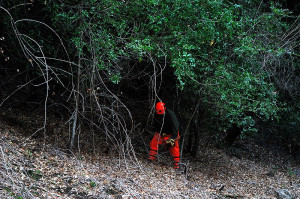
We spent the first two years here getting to know the land, and trying to carve out some usable space
The terrain here makes everything 10 times more challenging, and as there’s little flat ground here it’s also impossible to construct the infrastructure we would need to continue to expand and take this farm to the next level. To achieve our future goals.
Over the last few months we’ve been weighing our needs, our future goals, and our options. If we are to expand what we’re doing here, even modestly, and have any chance of making the farm truly profitable, we need to move the farm. There’s no question. However, the reality that is materializing is that moving the farm to another property in this same area may in fact be more dream, than reality.
Why Not Just Move?
For the last 6 months we’ve tried looking for more suitable property in the area, and will continue to do so, but it’s clear that over the last 20 years along this part of the Central Coast that much of the usable land that was once perfect for a small farmstead, has been snapped up by developers, old farm houses bulldozed, the land subdivided, rezoned into ‘estate’ parcels, and sold at 10-30 times the price per square foot.

During the housing boom, much of the farmland in this area was swallowed up by developments such as this
Even if we TRIED to run a small farm on a parcel the size of our existing lot, now in most areas of the county we’d be either in violation of zoning ordinances, or irritate the neighbors with the sounds and smells of ‘farm life’. We’d have a lovely 1,000 sq ft pristine new kitchen, with cherry cabinets, granite counters, and maple floors…but I have no doubt we’d also be known as “those people” in the neighborhood. Besides, who needs a KITCHEN that big? I’d be happy for a BARN that big!
I’m not joking. One of the ‘best’ 10 acre properties we found recently was in a gated community. Don’t laugh. I’m serious. I didn’t give a hoot about the house, but the land was great, and even zoned for small livestock (read HORSES). It made for entertaining conversation over dinner, as we tried to envision livestock trailers and beat up pickup trucks driving through the entrance gate, loaded with hay, or goats, behind a neighbor’s Aston Martin DB9. Or explaining to the neighbors why we don’t have need of their farrier for our hoof-stock.
I’m quite honestly not a ‘ladies who lunch’ type. There’s nothing wrong with that, it’s just not me. Even as a child I was happiest standing in a steaming pile of fresh horse manure, in my favorite Wellington boots, than having to wear long dresses, and ribbons in my hair.
Fundamentally I haven’t changed, and it seems my life has come full circle, in that I still frequently find myself standing in poop, and I still love every gosh-darned minute of it!
Apologies to my husband, but I think the last dress I wore was my wedding dress. I have no desire to have the sparkles, and trimmings, that some feel they can’t live without. I don’t want the biggest house, the shiniest car, the perfect kids (unless they’re goat kids of course). I simply want enough room for more hay storage, for a larger heirloom orchard, a few extra goats, a milk house, some extra hives, a few more chickens, and to enjoy more of the hectic, absurdly busy, peace and quiet that we’ve come to love here.
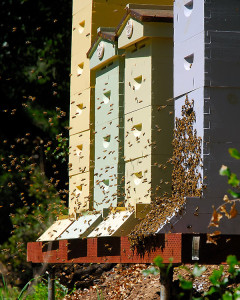
We’d like to have more space for a larger apiary. Our feral bees are doing well, and we could expand just through spring splits. The challenge is where to put the extra hives.
The reality is that although we’re not bad off, financially speaking, I’ve never felt more poor in my life. Apparently there must be a tremendous amount of absurdly wealthy individuals that moved to this part of the Central Coast in the last 20 years, because despite the wobble in the economy, property prices are still absurd. Even for two professionals. I don’t blame people for wanting to live here, it’s beautiful. Maybe I simply underestimated the number of people who work for Apple, or Google, who would demand estate pseudo-agrarian living, sans poop of course, in the countryside. Regardless, Toto, it’s clear we’re not in ‘Kansas’ anymore, and moving the farm elsewhere in this area is possibly no more than a pipe dream.
We Could Afford to Live Here — What’s Changed?
When we purchased our first house on the Central Coast, land was quite expensive. You can change a house, but not the property line, so the goal when we returned to this area after an absence of a few years, was to shop for the land, not the house, as a house can be changed. We thought we’d found the land, we just didn’t expect to outgrow it.

When we started there was very little usable space (top left). We spent the next two years getting to know the land, and carving out an area we could use (top right). Today (bottom) we’re making the best use of that space that we can (click to enlarge image)
The opposite appears to be true today, land is comparatively cheap. However, the vast majority of 10-20 acre parcels, with usable land, now have 3000-5000 sq ft McMansions built on them. Even though prices have come down, prices are still prohibitive because current real estate costs are per square foot of land improvement, and even at $400 a square, a 10 acre lot with a 5,000 sq ft house, quickly jumps to…well, you get it, you can do the math. No, that doesn’t include a barn…and let’s not even discuss the property taxes.
We’ve found a few promising properties in recent months, and we’re not at all averse to mucking in, and applying some elbow grease to improve a property to the way we want it. In fact, we’d prefer it. I’ve spent the last three years writing about that, and the last twenty living it. Fixer uppers are fine, and I’m a dab hand at sheet rock, mud and tape! Not to mention a tiling whiz, and a far better painter, than most I’ve seen hired. Not to toot my own horn. However, there’s a new wrench in the system. The banks.
What’s With the Banks?
As an example, there’s a parcel for sale just up the road from where we are now. It has a ridiculously large house (4,500 sq ft), that’s newer than the house we have now, on a more level, sunny lot, with existing stables. The total acreage is smaller than what we have now, but more of it is usable. The price seemed too good to be true, and we’ve been around the block a few times, so we expected something to be seriously amiss. Cracked foundation? Failed septic? Worn out well? Termites? Sink hole? Soil contamination? But at the listing price we were surprised, even in this economy, that in six months it hadn’t sold (we personally vetoed the property because of the size of the house, as we don’t want to maintain a house that large).
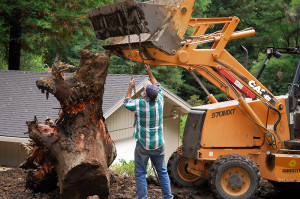
Sink holes aren’t uncommon in this area, usually the result of lazy builders decades ago that buried stumps and debris
We’ve been keeping an eye on the property because it affects our comps if we decide to sell. On further inspection, it turns out that because the house is in need of a few repairs, some structural, but mostly cosmetic, banks won’t carry a loan on the property. Seriously? So unless a homeowner is willing to carry the note, the property is now to be sold either as raw land (at an improved property price no less — welcome to California), or must be a ‘cash-only’ sale. Cash only? For a 30 year old house? Now I’M scared! If we wanted to sell Curbstone Valley, could we? Who knows?
We had also looked at a property, with an existing orchard, and TWO houses on it, a main house, and a caretaker’s house, all on…brace yourself…75 acres. With the property as-is it was priced at the upper end of our budget. We’re always joking about needing a farmhand or three, so the extra house sounded perfect. We were warned up front that the bank wouldn’t approve a conforming loan, so it would be a ‘land only’ sale. Two houses on the property, but a land only sale. This requires 50% down, fair enough, but the kicker is the balance has to be paid in 18 months. Gulp. Forget getting a loan to cover the costs of improvements. However, it didn’t hurt to look, so we did.
After seeing the property in person I understand, completely, why the bank wouldn’t loan on it. The main house was 100 years old, with a rickety post-and-pier foundation, and numerous non-permitted additions, in bad shape, with no improvements since about 1940. There was no well, just a spring water storage tank in need of replacement, and the septic (an ancient redwood tank), and both houses likely need to be torn out, and replaced. I get it. Other than the orchard, the best part of the property was the cement pad for the cattle chute, and the hay barn.
The other property, close to us, didn’t even compare. It’s a mere 30 year-old fixer upper, and yet funding can’t be secured by interested buyers. How bad could it be possibly be in comparison? Really? I now feel sorry for that owner, and wonder if they’ll ever sell. I also wonder how many other sellers are finding themselves in a similar situation. The buyers are out there, and I’m sure many are perfectly capable of fulfilling their loan obligations, we know, because we’re one of them, but the banks simply won’t write the loans, regardless of your intentions to build or improve on the land.
So what goes through my mind is what in green acres are the banks playing at? Our first house, before we improved it, was in far worse shape than the property up the road, especially after it flooded in the El Niño of 1998.
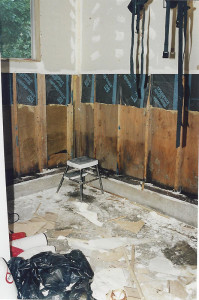
This was our first house after the flood — at least the properties we’ve looked at recently had finished walls
Are banks in this area so scared of making loans that now they’ll only loan on modern, improved, pristine properties? 10 years ago, all you needed for a mortgage was a pulse. With a mortgage to carry the difference, we could easily have afforded that property, and a few of the others that we’ve looked at. Banks though are now clearly afraid to take the risk that the properties won’t be improved, and now seem to be refusing to loan on property that we would have previously been considered to be modest fixer uppers. The pendulum has swung too far in the opposite direction to where it was during the boom. Oh, and it doesn’t matter if you have the collateral for the loan, and/or a healthy down payment either.
We’ve seen half a dozen ‘suitable properties’ (i.e. appropriately zoned, with enough usable land) go pending on the market, get relisted, and then had their terms of sale amended to clarify that loans may not be able to be secured, owner is now willing to carry the note, or the property is a ‘cash only’ sale. If buyers can’t secure mortgages on properties, even properties they can clearly afford, sellers can’t sell. Period. Aren’t the banks doing a fabulous job at stimulating the economy?
Realize, I’m a potential buyer in this scenario, not the seller, so there may be more to some of this than meets the eye. But, even after talking with area realtors, it’s more than off-putting to say the least.
So, after our initial exploration, it seems that while on the one hand this region is experiencing a boom in regards to consumer interest for locally grown, sustainably farmed produce, cheeses, and meats, much of the land that was ideal for small to mid-sized farmsteads is either gone, forced into cash only sales, or likely soon to be developed. Paved over, rezoned residential, and priced out of reach.
The few remaining properties that have not yet been developed, are more often than not so old, and in need of repair, or new infrastructure, that a bank wouldn’t loan on it anyway. Or, if you read the fine print, local towns and cities have already approved the lot to be subdivided to encourage its sale to developers. This has been a surprisingly common scenario in our recent search. That’s just simple economics from the city’s perspective, more parcels, equals more property tax revenue for local governments. If you’re in the market to buy property for a farmstead, my primary advice is caveat emptor! Explore your county’s long range development plan BEFORE making an offer. Or at the very least, make the results of such a search a contingency for the purchase of the property. That way, if necessary, you have the option to back out.
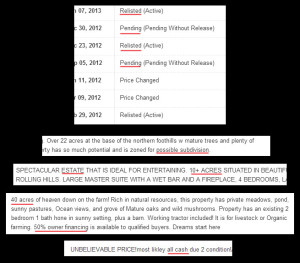
Here are a few examples of some properties we’ve looked at recently. Acreage for estates, and subdivisions, or farmland that’s owner financed, as the bank won’t (click image to enlarge)
We just looked at such a 22 acre property, surrounded by brand new mini-mansions on 10,000 square foot lots. We could afford it, because in the current market it’s no better than an unimproved lot. However, even if we wanted to, we can’t buy it, because it’s already rezoned as an estate RESIDENTIAL lot, should someone choose to purchase it, and keep the 22-acre parcel intact. Seriously, who needs 22 acres without livestock?
I was flabbergasted. However, it’s also been approved to be subdivided, and zoning aside, even if we dared to make an offer, we’d likely be outbid by a developer. We can’t compete against a developer. It’s sad, as the old farm house is actually quite quaint, with charm, and potential, to use realtor terms for ‘it needs a little work’. I suppose that’s the price of ‘progress’? Personally, I think it’s just sad.
We know there’s increasing demand for organic, sustainable product, and we’re fortunate to live in an area where consumer demand is high. Unfortunately, the reality is that expanding the farm in this area is looking to be less, and less likely, and we’re not willing to ‘bet the farm’ so to speak and take too large a financial risk, especially in this economy.
We’ve seen other small farms close in this area, and move away, and it’s obvious why. There are some larger farms, some even already certified organic, that we’ve seen listed for sale, but it’s not a scale on which I want to necessarily farm, or would want to HAVE to farm, just to stay afloat. I’m not sure it’s worth it.
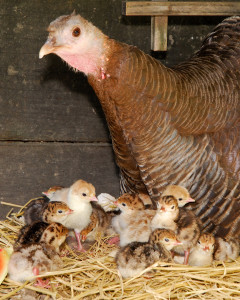
We have no desire to become large scale commercial farmers, we enjoy doing this on a small scale, but there’s a lack of local infrastructure available to small producers which limits what we can sell
For more perspective we’re currently reading Rebecca Thistlethwaite’s new book “Farms with a Future”, which is probably part of prompted me to write down my own thoughts in this post. Her family used to own TLC Ranch in the county, and I remember when it closed, and reading about her own reasons for choosing to close. I remember being saddened and frustrated for her, and her family, and tremendously disappointed at the lack of support, and land options, for truly small-scale family farmers in this area. I thought I understood her plight then. Now, I can honestly say “I get it”, really I do. It’s clear though that there’s such an imbalance in this area, that unless you’re independently wealthy, the math in regards to operating a small farmstead in this region simply doesn’t add up. I’m happy to say Rebecca and her family have gone on to find much success – out of state. NOT in California. That seems to be the linch-pin.
Ok, That’s Our Loss – So What?
It makes me wonder how many truly local, artisan, small-scale, responsible, and sustainable farms will be in this area in another decade, or two. As it is, when I press some of our local farmer’s market vendors, some admit to NOT producing food locally, but trucking much of it in from afar. Depending on the season, this gives some of them an enormous, and rather unfair, advantage over local growers. If you’re not farming here, maybe that doesn’t matter to you. If you’re a consumer, and content with shopping at your local mega-mart, maybe it’s not of any consequence. But if you want truly local, sustainable produce at your farmer’s markets, it’s important to support local producers. However, if the current trend of subdividing the remaining local area farm land continues, local products may become increasingly more difficult to source.
I also wonder how many small-scale farmers could have been, but were forced to give up, or to move elsewhere to realize their dream so they don’t financially ruin themselves in the process. For each small local producer that leaves, I think it’s our loss, as a community, and it saddens me to think that as a society we would rather have 5,000 square foot monster houses, and wholesale grocery establishments, than quality, responsibly produced, wholesome, sustainable food.
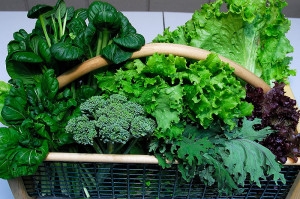
For now, we’ll stay focused on the current season’s crops, while we keep one eye on available properties
We know that if we want to grow our farm the logical choice is to move away from the area. Away from our potential market. Therein lies the double-edged sword of small-scale farming. We’ve looked out of state, and we can have everything we want and more, somewhere else. Anywhere else. Just maybe not here. For a host of professional reasons though, at this point in time, it’s simply not an option for us to relocate out of the area.
That said though, we’re not giving up. For now we’re tied to this area due to our ‘day jobs’. Ever optimistic, albeit massively frustrated, we’ll keep looking, and hopefully, if we’re patient, and persistent, something will turn up that proves to be a good fit for us. Who knows maybe we will find a suitable parcel somewhere, that’s fenced, with a small house that’s not in imminent danger of falling down, and no entry gate or security guard, but for now we’ll keep doing our best to make what we do have here work as best as we can. All the while knowing that in all likelihood, we may ultimately need to leave this area. If nothing else, our search has caused me to appreciate all the more what we do have, and what we’ve managed to achieve here to date.
I just need to come to terms with my frustration, and accept that for now, this is Curbstone Valley Farm. It’s not perfect, but it’s ours.

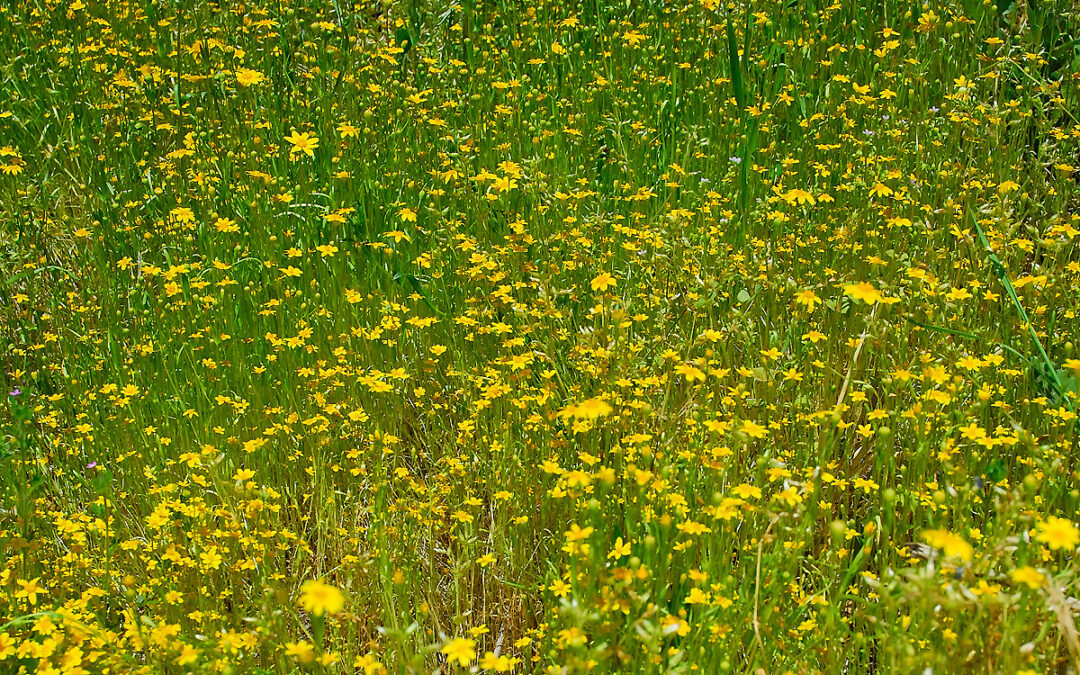
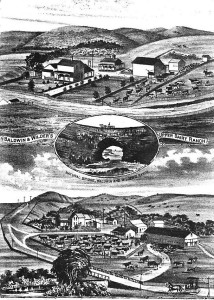
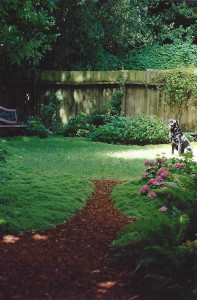

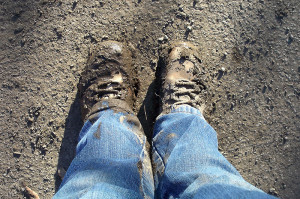

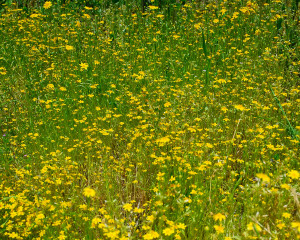
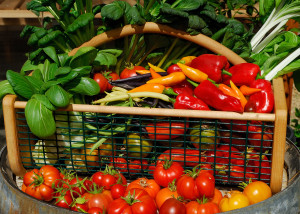
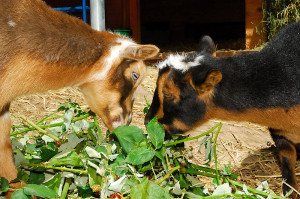
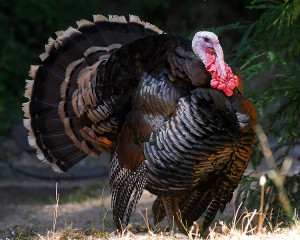
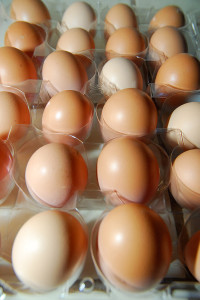

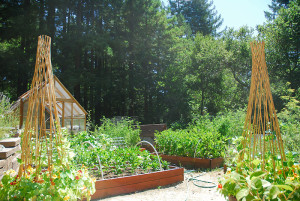







I can understand your pain. I’ve been looking into what it would take to permanently settle down in my part of the central coast. Nothing serious yet just checking out some of the local real estate. So far it is not looking promising! I love the California coast but I wonder if it is realistic for me.
I wonder if it’s realistic for most of us. There’s too much demand for hillside properties in close proximity to the ocean, which is why so much of the land in this area has been paved over. I think I was just a little surprised at how many properties are still at risk of subdivision, even in this economy. I’m also disappointed that more jurisdictions didn’t have more foresight when it came to developing their long range plans.
Clare, I can emphasize with your situation. Unfortunately, it sounds like your only option is to relocate to a more rural area. That wouldn’t be a terrible thing though, as it sounds like that’s the type of area you chose 20 years ago.
(Unless you really want to depress yourself about real estate prices in CA, do NOT look at land prices in say, rural Missouri.)
Well, we’re about as rural as you can get here. So it’s not a matter of moving to a more rural location here, but certainly somewhere else. It’s just not a realistic option for either of our professional careers at the moment though.
And of course I meant “empathize”, not “emphasize”. I don’t know whether to blame the spell checker or too-early-in-the-morning posting. 🙂
Reading this post, so many things spring up in my mind. First, I’m sorry for your frustration, and I really hope you find a new home that suits your needs and desires. It is so true that much of the really good, desirable farmland in this country has been turned into lawn, and it is sad for so many – farmers, eaters, wild plants and animals. It is next to impossible for most startup farmers to own land – even in a relatively depressed part of the country like NE Pennsylvania, where I live – and I am impressed by those that are able to make a trade/rental situation work. It’s not something I’d want to do – invest sweat, love and money into land that could be taken away. My husband and I looked at different parts of the country to buy land, and found something suitable, finally, in northern VT. We love it, but it’s rough, cold, and remote, and that’s why we could afford it. I feel like we’re incredibly fortunate to catch the tail end of the American Dream as it flies off out of reach (and existence). Just a few unorganized thoughts… I’ve got my fingers crossed for you:)
I agree, a rental/trade situation is not on the books. You can’t make that magnitude of emotional or financial investment in the land, for the benefit of someone else. We know the situation is unlikely to get much better for small farmers, especially in areas like this, which is why we felt, while prices are depressed, that now was an excellent time to try to secure the farm’s future. We’re continuing to look in this area, and more properties, now the holidays are over, are starting to come on the market. If we don’t find something we’re interested in over the coming months, we may have to reassess our situation completely.
Clare, thank you for this post. It’s always interesting to see what’s going on in other areas of the world in terms of farming, local food and real estate. In terms of property we experienced many similar issues and it’s what prompted us to move from one side of Canada to the other. Trying to find a home with usable land for a reasonable price simply wasn’t going to happen where we were living, mainly due to so called development. A funny trend I’ve noticed, and that you point out, is how people want to live ‘rurally’ but not really. Huge houses (I find our house at 2300 sq ft insanely big, can’t even imagine 5000) on acreages of lawn taking over what was once woods or farmland. But the owners are not interested in having farmers for neighbours or dealing with the realities of rural life, like say skunks. We’ve only been in our house 3 years but already I see the effects of subdivision housing showing up. We wonder how long we’ll stay here before moving again.
I don’t understand the drive for bigger and bigger houses. On one end of the spectrum there’s a push to downsize, for the sake of energy efficiency, and on the other there are people with more money than sense who feel compelled to own a palace. I personally have no desire to clean, nor pay to heat, a palace 😉 However, I come from a country where most mansions are now in a state of decay, or open to the public just to meet maintenance costs. I can’t help but laugh at these estate parcels, because I know if someone like us, with livestock, and poultry, were to move next door, we’d cause a neighborhood uproar. I just think it’s sad to lose the land to people who have no intent or use for it, other than to keep their neighbors at arm’s length.
I look at McMansions surrounded by lawn (in our mediterranean climate) and think – what they really want is a posh apartment, but free-standing not in a block. WITHOUT a garden.
I can completely understand your frustration. Our county is mostly supportive, and it’s impossible to put a subdivision on rural land here. But land costs are high and a lot of farmers sell out and gigantic prairie palaces get plunked down in the middle of what become a twenty acre yard. Doesn’t seem right.
We lucked out. I came to love barnyard animals as my kids were going off to college. Our one acre (flat) in a rural subdivision allows us two animal “units” – per unit that means fifty chickens, five goats, sheep, pigs, llamas or alpacas, or one horse or cow.
We now have the smallest house (2000 sq. ft) and the happiest barnyard (rooster, 13 hens, goat, pig) along with a bit of room to expand.
I hope you find what you want. I enjoy reading about your adventures!
I like the sound of your neighborhood. A number of areas will permit hens here, but progress to hoof-stock, and the rules change, unless the property is zoned appropriately. I think a 2000 sq ft house is plenty for most families. Besides, the last time I toured some historic houses, especially on the east coast, they were tiny compared to a small house today. Back then families tended to be larger too. Sometimes I just think our modern lifestyles have cause a number of people to lose perspective. For the right property, I’d be fine with downsizing the square footage of the house. I spend more time outside anyway! 😉
Clare it is a good thing to rant and your issues are frustrating particularly in CA where the atte is being overpopulated with people…learning to live with what we have is our only option until time shows us the next step and a new path…wishing you success in finding that wonderful farm you long for…
I do think part of our solution is not to rush. I’m hoping our patience will be rewarded, but we also have to look at our situation with a realistic eye, and the last few months have definitely been a reality check!
It was ever the way. Randall Morgan bemoans how the best bottom land in Santa Cruz was taken first for farms (OK) and then for development (not OK). It was the same in the Santa Clara Valley – valley of sunshine and flowers – 6 million orchard trees, etc etc. I can still remember orchards along Blossom Hill Road in San Jose. Money speaks louder than food – or conservation. I expect you’re looking around Gilroy or Watsonville areas? How about up Swanton way or behind Davenport? — I wish you all the best of luck in finding a new roost for your wonderful endeavors.
I remember orchards in Santa Clara, especially the McCarthy Ranch area, while there was still some hint of it being…well…a RANCH! We’re members of a beekeeper’s guild over on that side of the hill, and sometimes I get a greater kick of ‘we remember when’ than their anecdotes about beekeeping.
Gilroy has been a write-off. 99% of Gilroy that was farmland when we first arrived in Santa Cruz county, which quite honestly flummoxes me, is now subdivision, and the remaining large parcels are wineries, or estates. That said, we’ve been looking everywhere from just south of Pacifica, all the way south down the 101 corridor to Paicines. We’ll keep looking, especially as more listings come on the market in spring, but it’s quite appalling to see so many properties that just wouldn’t qualify to be a small farmstead.
This was such an amazing post – I love looking back to see how development has improved your garden and farm. It always seems as if there is never enough room to grow things! 🙂
There never is enough room. If we didn’t have the animals on the farm, growing space might be adequate, but by the time you factor in the chickens, turkeys, bees, and of course, goats, it’s easy to find yourself in need of a lot more space! 🙂
I will, unfortunately, be in your shoes sooner rather than later. I’m not particularly looking forward to it. I guess we should start looking now even though we’re not quite ready. 🙂
The challenge for us, looking in this area, is finding somewhere that won’t be surrounded by malls, freeways, and bullet trains, in the next 15 years. The pace of ‘progress’ isn’t always predictable. We were reviewing the proposed California high speed rail line maps yesterday, and reading about proposed solar-cell farms on prime land in neighboring counties (I’m sorry, but I think solar farms are a tremendous waste of land, unless they’re elevated, and the land can have at least a dual purpose). I see a lot more fertile land being consumed in this part of California, sooner, rather than later. I really do wonder about the wisdom of staying here, versus looking elsewhere.
Rebecca is speaking tonight at 7:30 at the Capitola Book Cafe
Yes she is! Thanks for the reminder, although I’m not sure I’ll be able to make it tonight 🙁
Hi Clare,
I don’t know if this will help, but here’s how a friend of mine solved a similar problem: Many years ago we lived in Independence, CA. In the Eastern Sierra most of the land is owned by the LA Dept. of Water and Power and is not for sale. My friend was a grower for the farmer’s market in Bishop. When her town lot became too small for the thriving business, she bought a vacant lot a few blocks away and expanded by growing on both lots. Does your farm have to be contiguous? If not maybe there is suitable land nearby.
We’ve considered that, maybe moving just the orchard and gardens, and keeping the livestock here with us. It does make management much less efficient though. However, part of the problem is that even land is at such a premium here along the coast, that we’re still competing with developers. We looked at 13 acres today in San Juan Bautista. Stunning property, and the sellers have lived on the land for 36 years. As yet, that area is unspoiled, and the neighbors had horses, and cows! We were so optimistic when we pulled up. If I had my checkbook, I probably would have just written a check the minute I got out of the car.
The property has been on the market for just two days. Because of the condition of the structures, it’s a land only sale, but the price is very fair, and the land was simply fabulous. Gently rolling (unlike our shin-splint inducing slopes here), sunny, and the bonus was amazing views across the valley. Sadly, the price was so fair, that while we were touring the property we were informed that a developer wants to buy the land, and is already working with the county to get the land approved for a subdivision, and contacting PG&E about moving power. They’re like vultures. The developers see ‘acres’ signs, and swoop. Developers have the advantage of buying land, or land only sales, as they have the resources and infrastructure already in place to work with bank timelines on land loans. The sellers will sell to them just because they want the money. Developers also have deeper pockets, and we won’t get in a bidding war with a developer, as that’s a war we know we can’t win. Days like today make me want to give up, but the good news is we saw somewhere that could have worked for us today, within our budget, so we’ll just keep looking…
Having grown up and worked on land issues in Contra Costa County, I am so very, very familiar with the issues you are talking about. Contra Costa used to have the second highest concentration of horses in the country outside of Kentucky (I think only LA County was higher), but rapid development resulting in escalating land prices pushed many of them out of the county. As an adult, I saw huge subdivisions eat up some of the top agricultural soil in the world in the eastern part of the county…and to add insult to injury, many of the houses built were starting to fall apart within a year or two of being built! Part of the reason so many municipalities are eager to approve subdivisions has to do with the recent structural budget short falls California has, due in large part to the rollback of the Vehicle License Fee, which took money out of the hands of local governments. Subdivisions bring in some immediate developer fees, but they are a short-term solution because residential parcels actually take up more local government services than they provide in revenue (teachers, streetlights, emergency services, road maintenance, parks, etc). With the extreme squeeze on county and city governments, immediate developer money looks pretty nice. People talk about not needing farms because we can import food from elsewhere, but it seems to me that matters of food security are matters of national security, and we’d better get smarter about preserving our ability to farm locally. And don’t even get me started on the banks who would lend anything to anyone with a heart beat, got us into a world of financial hurt, and seemingly won’t lift a finger to help small businesses expand or loan money to very good “loan risks” even while they are getting basically free money to loan out from the Fed. We looked at trying to get some “unimproved” land before we found our current place, and were appalled at the loan terms because it would have been impossible for us to afford the loan, even though it would have been a third of what our current mortgage is. That is messed up. All that being said, good luck with your search!
I remember, when I first moved from London, to the Bay Area, about 30 (gulp) years ago, how different things were, even then. Back then, parts of Livermore, Pleasanton, and Walnut Creek, were still ‘in the boonies’. Now, you can’t find a square patch of soil in that area below six figures.
I know that City governments are incentivized to subdivide farm land. In their, albeit brief, term in office, it makes them look good…they get to up the revenue. What ticks me off is that it is so short-sighted. Once paved-over, it’s gone, forever. I agree, it allows them to bridge a budget shortfall, while they’re in office. Sadly, 5-years after they leave, their constituents realize they’ve sold them short, but by then, it’s too late.
I try to be rational in my views, but honestly, I’ve lived here for 30+ years, and seen the changes. I’ve seen how greed drives policy change. I would be MORE shocked if there were sweeping efforts to preserve what remains.
The reality is that the last three properties we’ve been interested in, have either already been approved for subdivision, or the potential developer was there lurking, during our tour of the property. I could seriously spit.
I can’t blame the developers, it’s a great deal. I can’t blame the home owners, it’s guaranteed income. I can’t blame the cities, as in this economy, I understand the need to raise revenue. However, in ten years, I promise, I guarantee, we’ll all wonder why ALL of our our ‘seasonal’ produce is coming from afar, whine that it’s not local, and yet not see WHY it happened, because we insisted that was the best for us…now, this minute.
Wake up California. You can’t have uninterrupted ocean views, and local produce. Pick what’s best, in the long term. Stop being terrified of ‘long term vision’. A view for the so very few, or food for the masses (preserving views I might add). It’s your choice, and the time to make that choice, is now. Stop allowing the developers, and rich gits, and city planners, to rob you, or the next generation, blind.
As a California native, I’ve noticed that CA is very focused on the immediate and has a perverse inability to see farther than 5 seconds into the future. Considering the air quality problems in the central valley, I wouldn’t want to eat that produce even if it was ‘local’. Most people I know still whine about the price of organic produce while slurping overpriced coffee in their giant cars that are parked in massive garages. We don’t have environmental footprints anymore. We’re leaving behind huge craters, instead.
I’ve noticed that people will balk at the price of organic farm-fresh eggs, while clutching their keys to a 7 series BMW. I suppose not everyone has the same priorities. The rate we’re paving over prime growing land though, in my opinion, it will come back to haunt us all.
In rural Adams County, Pennsylvania, where I live part-time, farmland is also being converted to housing developments at an alarming rate. My native New England is much more likely to have farm-friendly laws and zoning regulations. The number of farms in Maine has been increasing in recent decades (although the average size of these farms has been getting smaller). One town in Massachusetts that I visit once or twice a year because it is home to a favorite plant nursery has signs at the town boundaries announcing that it is a “farm-friendly community.” This seems to mean that if you are moving there for a suburban McMansion lifestyle, you should be prepared to live with the sounds and smells of farm life.
What you are describing seems to me like so much of our public policy and business practice in the US — alarmingly short-sighted.
This area was very ‘farm friendly’, 20-some years ago. I think we were caught off guard as to how much this area changed in just a few years. I definitely wouldn’t call this area small farm friendly any more, and I think it’s only a matter of time before some of the land associated with the larger farms in the area is snapped us by developers too. Sometimes I wish I had a crystal ball. I’m not sure staying here, in the long term, would be a wise move unfortunately.
I am so sorry about your situation now, i can fully relate to you. But i didn’t know that in an advance country where land zoning is very well implemented, areas like yours will be competing with “developers” (i put quotations because your kind are developers too)! They are the bad developers. I can understand it easier here when prime paddy ricefields are turned into high-end subdivisions, because our zoning regulations are just mostly on paper. But your country, i thought is very serious with that. I can visualize the difficulty you undergone, and now i feel sorry for the live animals and gardens, and yes bees, that might probably be leaving their homes. Oh for me any goodbye is depressing! God bless, and good luck!